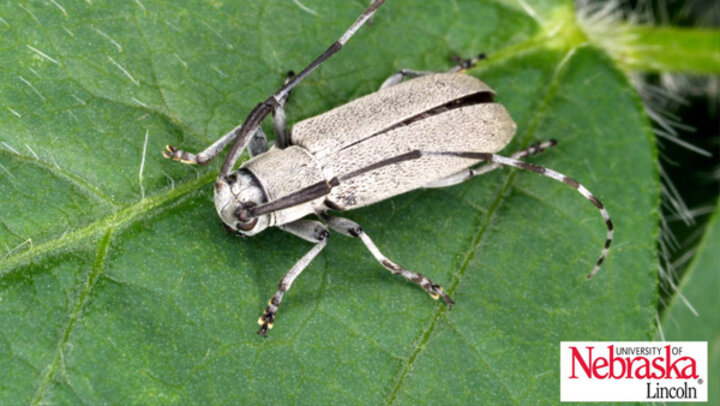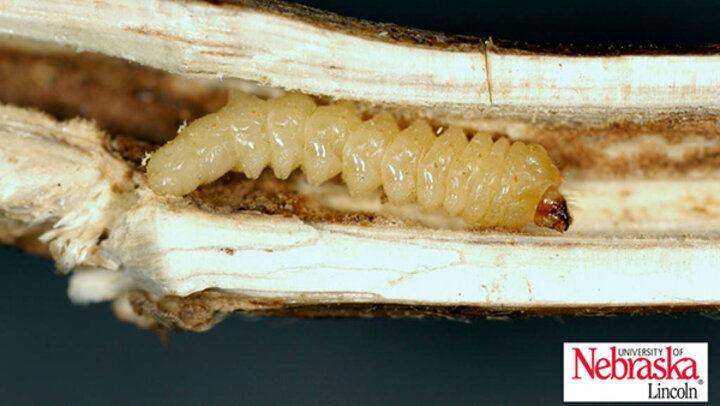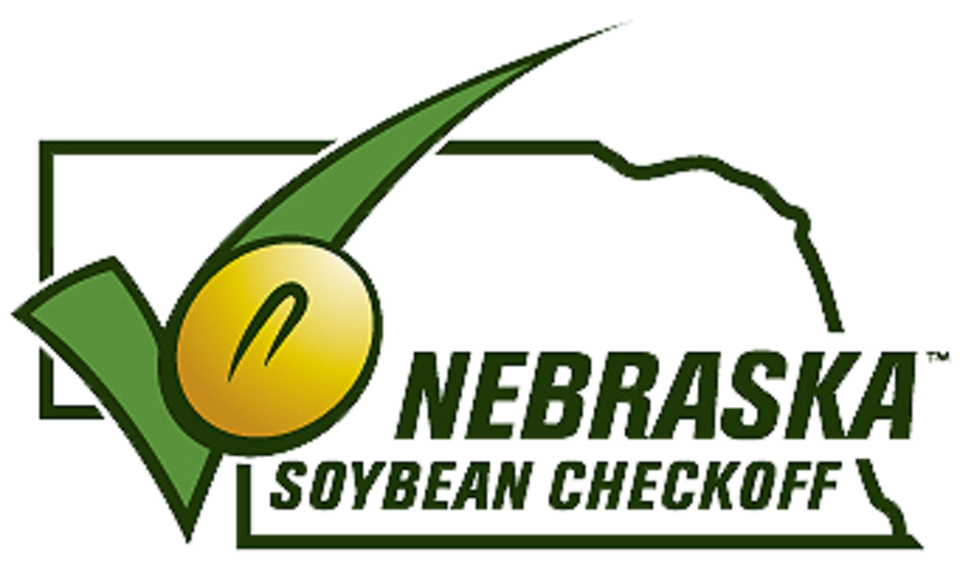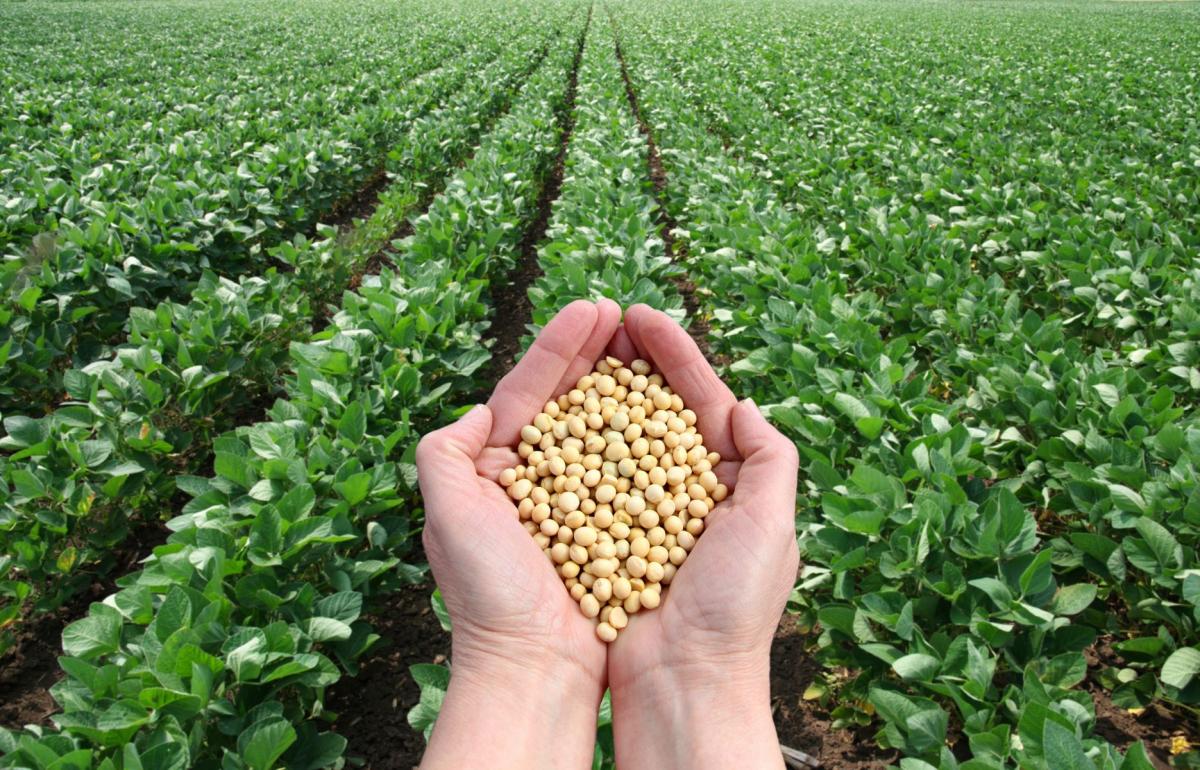Insects: Soybean Stem Borer
The soybean or dectes stem borer (Dectes texus) is a long horn beetle that, during larval stage feeding, can cause a significant number of soybean plants to lodge. The adult beetle is about ½ inch long and cylindrical shaped with antennae that are about 1 inch long (Figure 1). The beetle is light gray and the antennae have alternating light and dark gray bands. The adults are present in soybean fields from late June through the August. The females lay eggs into the stems at leaf attachment points (petioles). When the eggs hatch, the larvae will bore into the stem where they begin to feed on pith. There is minimal damage caused by larval stem feeding.
Larvae are a light cream color, cylindrical shaped, and when mature are about ½ to 5/8 inch long (Figure 2). As the larvae mature, they move to the base of the plant stem where they will hollow out the interior to form an overwintering chamber. The formation of the overwintering chamber creates a weak location on the stem where the plants have greater risk of lodging. This lodging can result in harvest difficulties and significant yield loss. The larva will overwinter in the field to emerge as an adult the following summer.


Soybean Stem Borer Management
Scouting
Soybean fields can be monitored for the presence of beetles and plant damage beginning in late June. When the beetles lay eggs into the stem, the associated leaf will eventually wilt and die. Fields should be checked in at least five locations, looking for plants with wilting or dead leaves. Particularly close attention should be paid to fields that were either planted early or were planted to a shorter season variety. These types offields tend to be more susceptible to damage by the formation of larval overwinter chambers, thus have a greater risk of lodging. If 50% of the checked plants have stem borer damage, the field is at risk for significant stand loss. Early harvest is recommended for fields that have this degree of infestation.
Insecticides
The adult stem borers are susceptible to insecticides, but because they are found on the plants for an extended period of time, controlling adult beetles would be expensive and is not recommended. The larvae are well protected within the stem of the plant, thus topically applied insecticides will not kill them.
| Early harvest of infested fields is the best method to manage larval infestations. Infested fields should be harvested as soon as the mature beans are dry enough to be processed by a combine. |
| Rotation to a crop other than soybeans will also reduce area stem borer populations. |
| Planting longer season soybean varieties is another effective management practice. Growing these varieties allow more time to harvest the crop before infested plants lodge. |
| Stem borer adults are attracted to a number of large stemmed weed species. Control of within field weeds such as sunflowers, ragweed, and cocklebur will reduce these alternate hosts and consequently the number of borers in the field. |
| Another control method is to plant a trap crop of sunflowers next to a soybean field. The beetles prefer to lay eggs in the sunflowers, thus reducing the number of beetles found in the adjacent soybeans. |

Nebraska Soybean Board graciously provided the funding for the Soybean Management Guide.
Course authored by:
Amy Timmerman, extension educator; Aaron Nygren, extension educator; Brandy VanDeWalle, extension educator; Loren Giesler, Plant Pathologist Department head; Ron Seymour, extension educator; Keith Glewen, former extension educator; Charles Shapiro, emeritus extension soil scientist; Amit Jhala, extension weed specialist; Don Treptow, former graduate student
